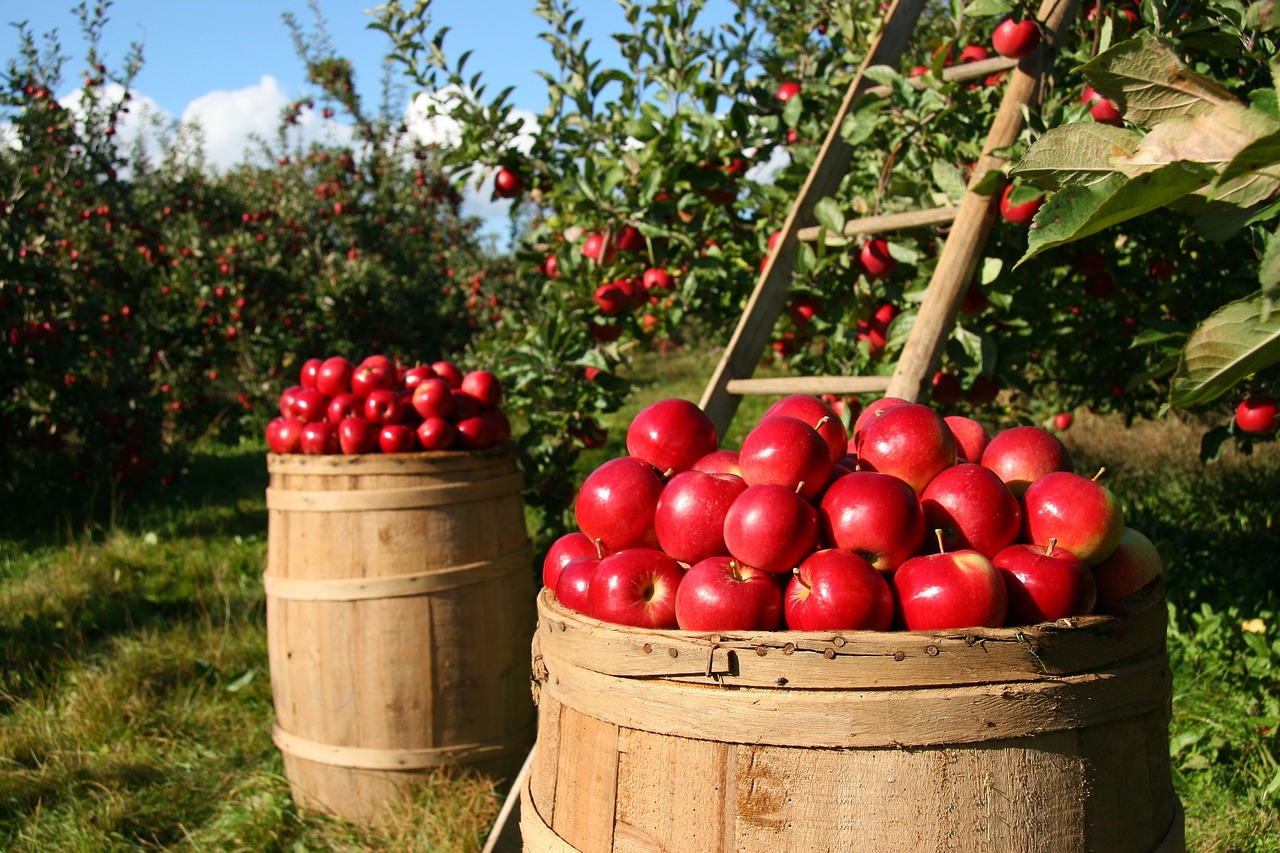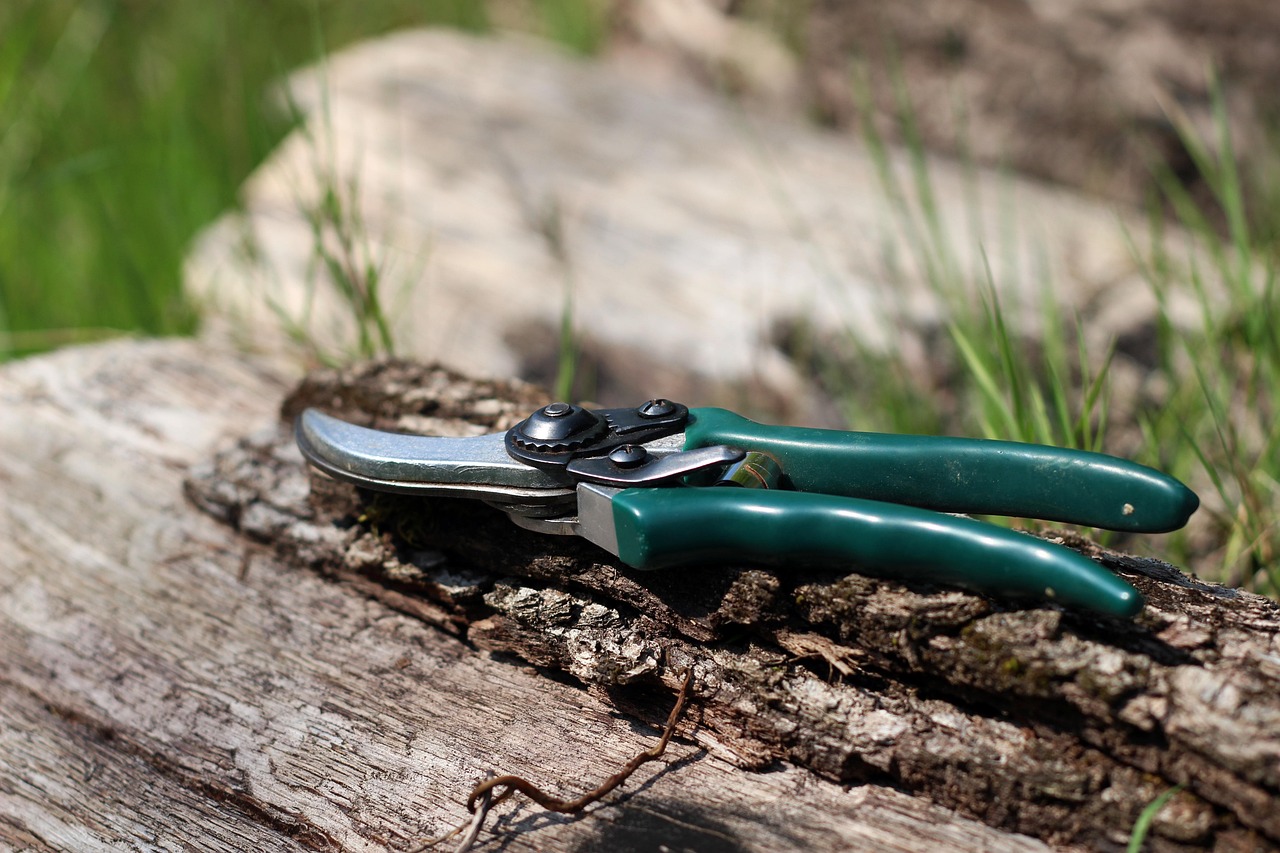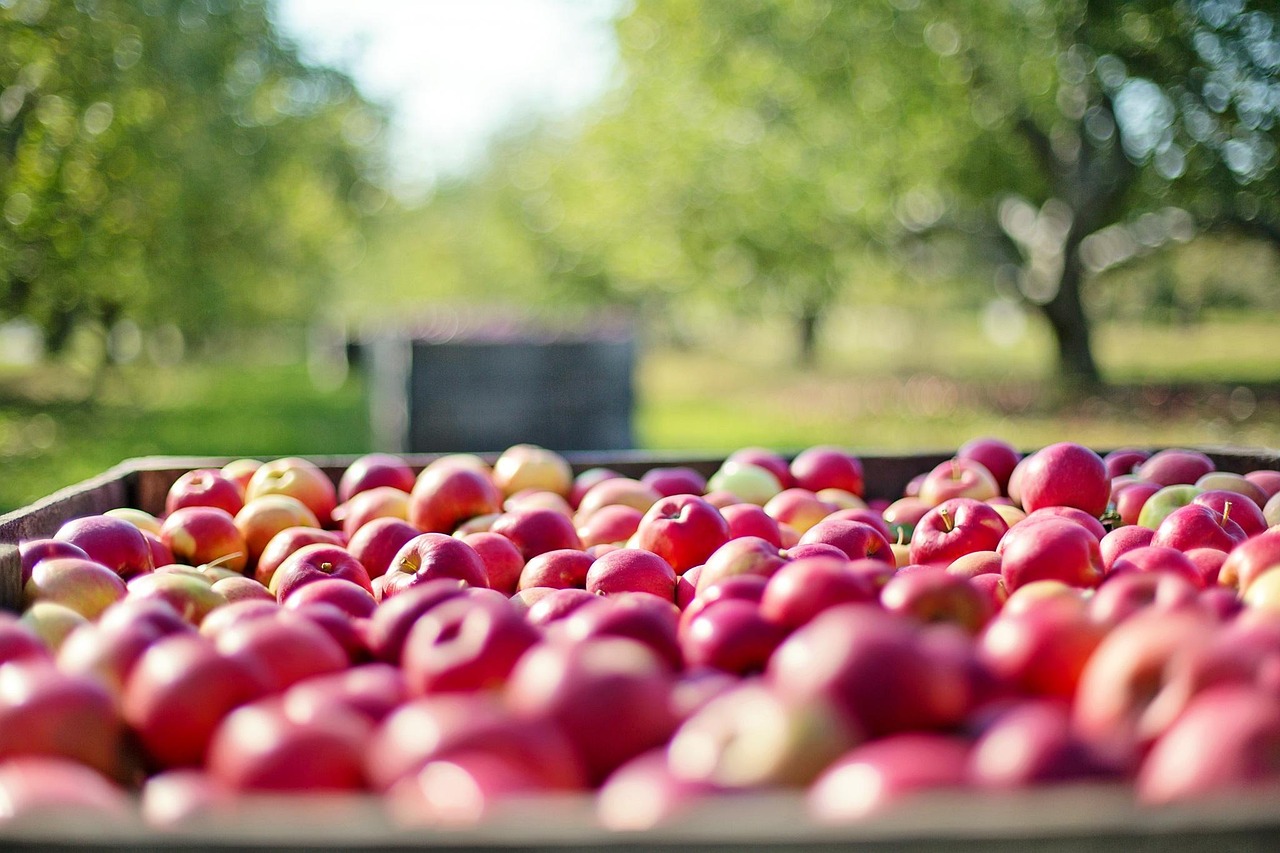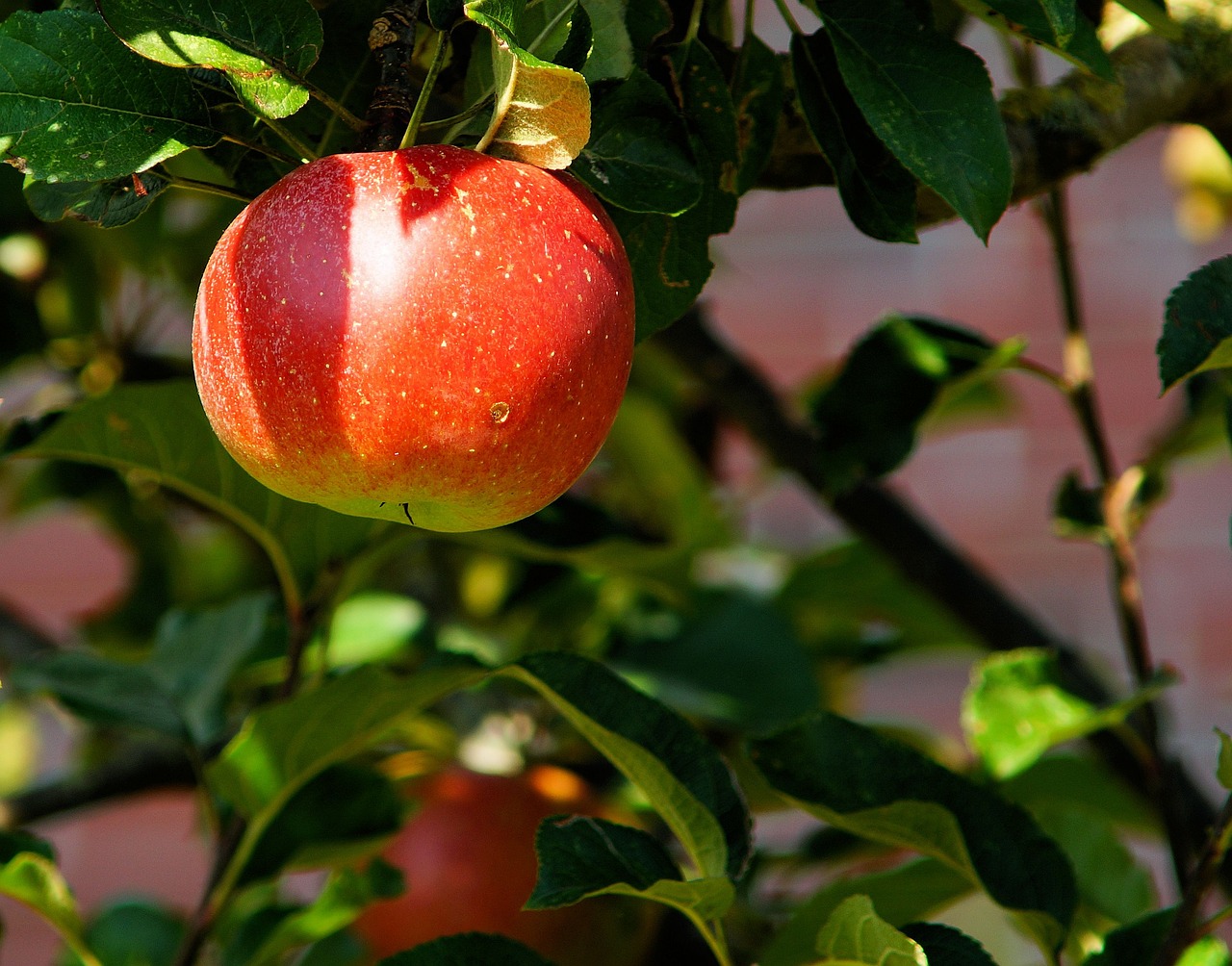Seasonal pruning is a critical practice for maintaining sustainable and eco-friendly orchards. By selectively removing branches at specific times of the year, growers can enhance tree health, improve fruit quality, and promote biodiversity within the ecosystem.
Pruning is an ancient agricultural technique that has evolved significantly over the years. It involves the careful cutting of branches on fruit trees to improve their growth and productivity. Seasonal pruning focuses on timing, as different seasons offer unique benefits and challenges for orchard health. This practice not only helps in shaping the trees but also plays a vital role in pest control and disease management.

Understanding the different types of pruning and when to apply them can lead to healthier trees and better yields. For instance, winter pruning promotes strong growth in the spring, while summer pruning can reduce tree size and manage fruit production. Each season presents its own opportunities for orchard management, making it essential for growers to adapt their strategies accordingly.
Benefits of Seasonal Pruning
There are numerous benefits associated with seasonal pruning in orchards, particularly when aiming for sustainability and eco-friendliness. Below are some key advantages:
- Improved Air Circulation: Pruning allows for better airflow between branches. This reduces humidity levels and helps prevent fungal diseases.
- Increased Sunlight Exposure: Removing excess branches opens up the canopy. This enables more sunlight to reach all parts of the tree, promoting even ripening of fruits.
- Enhanced Fruit Quality: Properly pruned trees typically produce larger, healthier fruits due to reduced competition among branches.
- Pest Control: Seasonal pruning can help eliminate habitats for pests and reduce their populations naturally.
- Resource Management: Healthy trees use water and nutrients more efficiently, which is crucial in sustainable farming practices.
In addition to these benefits, seasonal pruning contributes to the overall health of the orchard ecosystem. By fostering biodiversity, growers can create a more resilient environment that supports both plants and wildlife. This interconnectedness is vital for long-term sustainability.

Best Practices for Seasonal Pruning
Successful seasonal pruning requires knowledge and careful planning. Here are some best practices to consider:
- Know Your Tree Species: Different fruit trees have unique growth patterns. Understanding these patterns can help you decide when and how to prune each type.
- Timing is Key: Winter and summer pruning serve different purposes. Winter pruning encourages new growth, while summer pruning helps manage tree size and fruit set.
- Use Sharp Tools: Always use clean, sharp tools to make precise cuts. Dull tools can damage branches and lead to disease.
- Cut at the Right Angle: Make cuts at a 45-degree angle to promote healing and prevent water accumulation on the cut surface.
- Avoid Over-Pruning: Prune judiciously. Removing too many branches at once can stress the tree and reduce its productivity.
Each of these practices plays a crucial role in ensuring that pruning is not only effective but also eco-friendly. By maintaining high standards in orchard management, growers contribute to a healthier ecosystem while achieving their agricultural goals.
Different Seasonal Approaches
The approach to pruning can vary significantly based on the season. Below is a brief overview of how pruning differs across winter and summer:

| Season | Purpose | Techniques | Considerations |
|---|---|---|---|
| Winter | Encourage growth and shape trees | Remove dead or diseased branches; thin out crowded areas | Avoid pruning during extreme cold or wet conditions |
| Summer | Manage size and improve fruit quality | Pinch back new growth; remove excess fruit | Monitor for pests and diseases more frequently |
This seasonal differentiation highlights the importance of timing in effective orchard management. Each season presents unique challenges and opportunities that can significantly impact the overall success of an orchard. By embracing these practices, growers not only enhance their productivity but also contribute positively to the environment.
Understanding Pruning Techniques
Pruning techniques are essential for maintaining the health and productivity of orchards. Each method has specific goals and outcomes, which can enhance sustainability efforts. Below, we explore various pruning techniques and their applications in sustainable orchard management.
Types of Pruning Techniques
There are several types of pruning techniques that orchardists can utilize. Each technique serves different purposes and is suitable for various tree species:

- Thinning: This method involves removing selected branches to improve air circulation and light penetration. Thinning encourages the growth of stronger branches and better fruit quality.
- Heading Back: In this technique, the tips of branches are cut back to encourage bushier growth. This is often used on young trees to promote a fuller canopy.
- Renewal Pruning: This involves removing older branches to stimulate new growth. It is particularly useful for older trees that may need rejuvenation.
- Cleaning: This technique focuses on removing dead, damaged, or diseased branches. Regular cleaning helps prevent the spread of diseases and pests.
Each of these techniques can be applied during specific seasons to maximize their effectiveness. Understanding when and how to implement these methods is crucial for sustainable orchard practices.
The Importance of Clean Tools
Using clean, sharp tools is vital for effective pruning. Dirty tools can transfer diseases between trees, leading to significant losses in an orchard. Below are some tips for maintaining tool hygiene:
- Clean Before Use: Wipe down tools with a disinfectant solution before starting to prune.
- Sharpen Regularly: Keep blades sharp to ensure clean cuts that heal quickly.
- Store Properly: After use, clean and store tools in a dry place to prevent rusting and damage.
Pest Management through Pruning
Pest management is a critical component of sustainable orchard practices. Seasonal pruning can significantly influence pest populations and their impact on trees. By removing branches that harbor pests, growers can minimize infestations naturally.
Identifying Pests
Understanding common orchard pests is essential for effective management. Below are several pests that often affect fruit trees:
| Pest | Description | Impact on Trees |
|---|---|---|
| Aphids | Small, sap-sucking insects that can be green, black, or brown. | Can weaken trees by extracting sap and transmitting diseases. |
| Spider Mites | Tiny arachnids that create fine webs on leaves. | Cause leaf discoloration and drop, reducing photosynthesis. |
| Coddling Moth | A caterpillar that infests fruit, causing internal damage. | Affected fruit may drop prematurely or be inedible. |
By regularly inspecting trees for these pests, growers can take proactive measures. Pruning removes branches that serve as breeding grounds, thus reducing pest populations over time.
Integrating Biodiversity in Orchards
A diverse ecosystem within an orchard promotes natural pest control and enhances plant health. Incorporating biodiversity can be achieved through various methods:
- Companion Planting: Planting flowers or herbs alongside fruit trees can attract beneficial insects that prey on pests.
- Diverse Crop Selection: Growing a variety of tree species helps create a balanced ecosystem, reducing the risk of widespread pest outbreaks.
- Nesting Sites for Birds: Providing birdhouses or natural nesting areas encourages birds that feed on harmful insects.
These practices not only support pest management but also contribute to overall orchard sustainability. By fostering a rich environment, growers can create a self-regulating system that benefits both plants and wildlife.
The Role of Soil Health in Pruning
The health of the soil directly affects tree growth and productivity. Healthy soil supports strong root systems, which are essential for nutrient uptake. Here are ways to enhance soil health in orchards:
- Cover Cropping: Growing cover crops during the off-season prevents soil erosion, improves soil structure, and adds organic matter.
- Crop Rotation: Rotating crops helps prevent nutrient depletion and reduces the buildup of pests and diseases in the soil.
- Organic Amendments: Adding compost or other organic materials enriches the soil with nutrients and beneficial microorganisms.
A well-maintained soil ecosystem supports vigorous tree growth, which in turn makes pruning more effective. Healthy trees are better equipped to recover from pruning stress and produce higher-quality fruit.
Tools and Equipment for Effective Pruning
Having the right tools is essential for successful seasonal pruning in orchards. Proper equipment not only enhances efficiency but also ensures that cuts are clean and precise, promoting quicker healing for the trees.
Essential Pruning Tools
Below is a list of essential tools every orchardist should consider for effective pruning:
- Hand Pruners: Ideal for small branches, these are essential for making precise cuts.
- Loppers: A larger tool that is effective for cutting thicker branches. They provide more leverage and reach.
- Pruning Saws: Useful for cutting larger branches that cannot be handled with pruners or loppers.
- Pole Pruners: These extendable tools allow access to high branches without the need for a ladder.
- Hedge Shears: Suitable for shaping and maintaining smaller trees or shrubs.
Each tool has its specific purpose, and using the right one can make a significant difference in the quality of pruning. It is important to choose tools that feel comfortable and are easy to manipulate.
Maintaining Pruning Tools
To ensure longevity and effectiveness, pruning tools require regular maintenance. Here are some maintenance tips:
- Cleansing: After each use, wipe down tools with a disinfectant to remove sap and debris.
- Sharpening: Regularly sharpen blades to maintain a clean cutting edge. This reduces damage to the branches.
- Rust Prevention: Store tools in a dry location and apply a light coat of oil to prevent rusting.
Maintaining tools not only extends their life but also ensures they perform optimally during the critical pruning season.
Understanding Tree Growth and Development
A solid understanding of tree growth patterns is crucial for effective pruning. Different species have varying growth habits and requirements. Knowing these differences can guide pruning decisions.
Growth Stages of Fruit Trees
Fruit trees typically go through several growth stages, each requiring different care:
- Juvenile Stage: In this early stage, trees focus on establishing their root systems. Minimal pruning is needed, but formative cuts can help shape future growth.
- Mature Stage: At this point, trees have a developed structure. Regular pruning is essential to maintain health and productivity.
- Declining Stage: Older trees may experience reduced fruit production. Renewal pruning can help stimulate new growth and improve fruit quality.
Recognizing these stages allows growers to tailor their pruning techniques accordingly, maximizing tree health and fruit yield.
The Role of Climate in Seasonal Pruning
The local climate plays a significant role in determining the best timing and techniques for seasonal pruning. Understanding how climate affects tree health can lead to more effective management strategies.
Effects of Temperature and Weather Patterns
Climate factors such as temperature, humidity, and precipitation can influence the timing of pruning:
- Temperature: Warmer winter temperatures may prompt earlier pruning. In cooler climates, pruning should occur when trees are fully dormant.
- Rainfall: Wet conditions can increase the risk of disease. Pruning during dry periods is preferred to minimize this risk.
- Frost Risks: Late frosts can damage new growth. Timing summer pruning becomes crucial to avoid frost damages on fresh cuts.
Understanding these climatic influences allows orchardists to optimize their pruning schedules, ensuring trees remain healthy and productive throughout the growing season.
Pest and Disease Management Related to Pruning
Pest and disease management is integral to maintaining sustainable orchards. Seasonal pruning can play a pivotal role in controlling these threats.
Pest Prevention Strategies
Here are some strategies that integrate pest management into seasonal pruning practices:
- Avoiding Overcrowding: Pruning to improve airflow reduces humidity levels that favor pest development.
- Monitoring for Infestations: Regular inspections during and after pruning can identify pest problems early, allowing for immediate action.
- Cultural Practices: Implementing practices such as companion planting can reduce reliance on chemical pest control methods.
By integrating pest management strategies with pruning practices, orchardists can create a healthier environment that minimizes pest infestations naturally.
Disease Management Through Pruning
Disease management is another critical aspect of maintaining healthy orchards. Certain diseases can spread rapidly if not managed properly. Here are key aspects related to disease management in conjunction with seasonal pruning:
- Removing Infected Material: Regularly prune any dead or diseased wood to prevent disease spread.
- Timing Cuts Appropriately: Prune during dry weather when trees are less susceptible to infections from pathogens.
- Disinfecting Tools: Always disinfect tools between cuts when dealing with diseased trees to prevent cross-contamination.
This proactive approach helps orchardists not only manage existing diseases but also prevent future outbreaks, contributing to the overall sustainability of their orchards.
Implementing a Pruning Schedule
Creating and adhering to a pruning schedule is key to effective orchard management. A well-planned schedule helps ensure that all trees receive the necessary care at the right times. Here are some tips for developing a pruning schedule:
- Assess Tree Health: Begin by evaluating the health and structure of your trees. This assessment will guide your pruning decisions.
- Consider Local Climate: Take into account local weather patterns and seasonal changes when planning your pruning activities.
- Document Pruning Activities: Keep records of when and how you prune each tree. This information can inform future pruning decisions.
- Adjust as Needed: Remain flexible in your schedule. Some trees may require more attention based on their growth patterns and health status.
Establishing a pruning schedule not only ensures timely care but also enables orchardists to monitor tree conditions over time, leading to better overall management.
Education and Resources for Orchardists
Continuous education is vital for effective orchard management. Various resources are available to help orchardists improve their pruning practices:
- Workshops and Training Sessions: Many agricultural extension services offer workshops on pruning techniques tailored to local conditions.
- Online Courses: Numerous online platforms provide courses focusing on sustainable practices in orchard management, including pruning.
- Books and Publications: There are many books dedicated to fruit tree care that cover topics like seasonal pruning and pest management.
- Local Agricultural Cooperative Extensions: These organizations often provide valuable resources and expertise specific to regional farming conditions.
By leveraging these educational resources, orchardists can stay informed about the latest techniques and practices in sustainable orchard management.
Community Involvement and Networking
Engaging with the local agricultural community can provide additional support and knowledge. Networking with fellow orchardists allows sharing of experiences, challenges, and solutions related to pruning and sustainable practices.
- Join Local Farming Groups: Connecting with local farming organizations or cooperatives can foster collaboration and shared learning.
- Participate in Orchard Tours: Visiting other orchards can provide insights into different pruning techniques and sustainable practices.
- Attend Agricultural Fairs: These events often feature workshops, demonstrations, and opportunities to meet experienced growers.
Building a supportive network not only enhances knowledge but also creates a sense of community among orchardists, leading to better practices and outcomes for all involved.
Final Thoughts
Seasonal pruning is an essential practice for maintaining sustainable and eco-friendly orchards. By understanding the various techniques, tools, and approaches outlined in this article, orchardists can significantly enhance the health and productivity of their trees. The integration of pest and disease management with pruning practices contributes to a holistic approach that benefits both the environment and the grower’s yield.
As you implement these strategies, remember that each orchard is unique, requiring tailored approaches based on tree species, local climate, and specific growing conditions. Continuous learning and adaptation are key to success in orchard management. By prioritizing sustainable practices, you not only improve your yields but also contribute positively to the ecosystem.
Ultimately, effective seasonal pruning fosters healthier trees, higher quality fruit, and a more sustainable future for orchards. Embrace the journey of growth—both for your trees and your knowledge—and enjoy the fruits of your labor.
